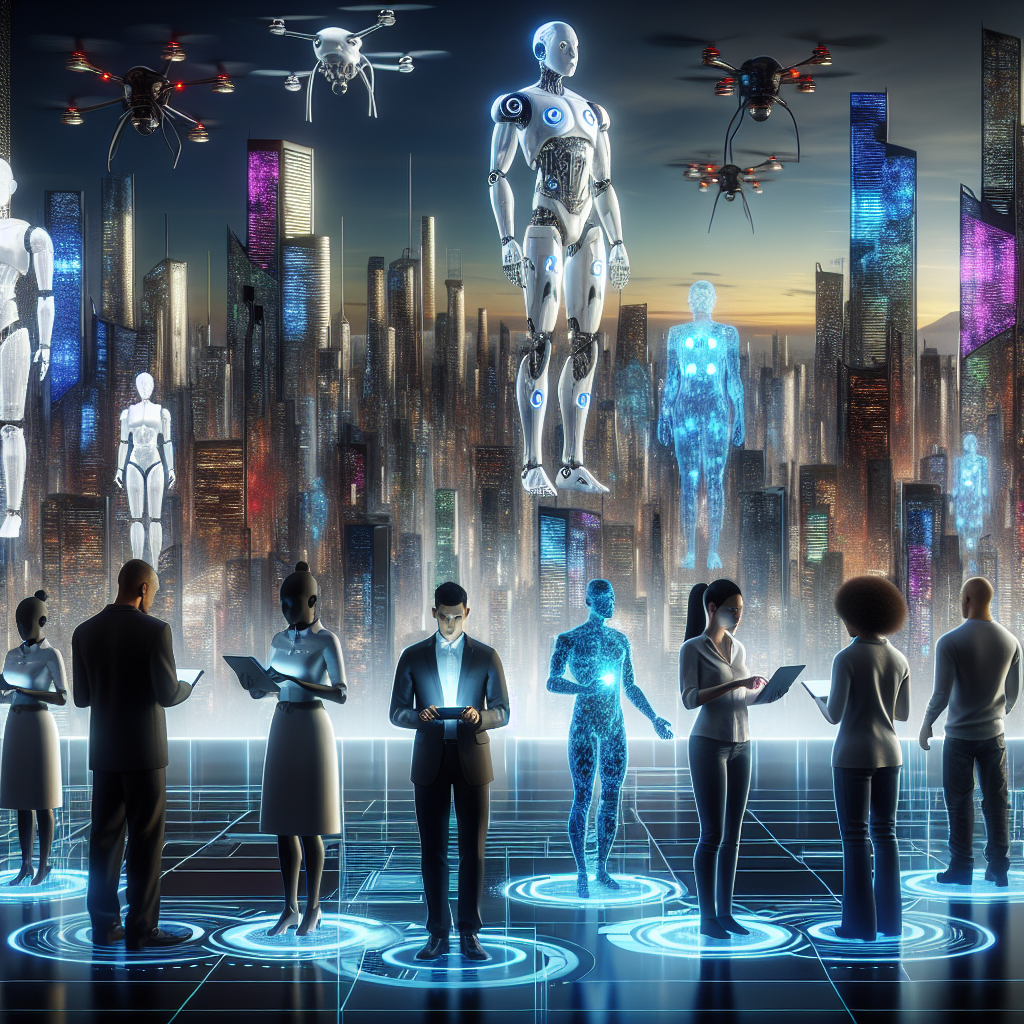From Sci-Fi to Reality: The Rise of AGI and What it Means for Humanity
Artificial General Intelligence (AGI) has long been a staple of science fiction, with depictions of sentient robots and superintelligent machines captivating audiences for decades. However, as technology continues to advance at an exponential rate, AGI is no longer just a figment of our imagination – it is becoming a reality. In this article, we will explore the rise of AGI, its potential impact on humanity, and what the future may hold as we continue to push the boundaries of artificial intelligence.
What is AGI?
AGI refers to a form of artificial intelligence that possesses the ability to understand, learn, and apply knowledge across a wide range of tasks, much like a human being. While current AI systems excel at specific tasks, such as image recognition or natural language processing, they lack the general intelligence and adaptability that humans possess. AGI, on the other hand, aims to replicate the cognitive abilities of the human brain, allowing machines to think, reason, and problem-solve in a manner that is indistinguishable from human intelligence.
The development of AGI is considered the next frontier in artificial intelligence, with researchers and engineers working tirelessly to create machines that can truly think for themselves. While we are still far from achieving true AGI, recent advancements in machine learning, deep learning, and neural networks have brought us closer than ever before to realizing this goal.
The Rise of AGI
The concept of AGI has been around for decades, with researchers and scientists dreaming of creating machines that can match or even surpass human intelligence. While early attempts at AGI were met with limited success, recent breakthroughs in AI technology have reignited interest in the field and accelerated progress towards achieving true general intelligence.
One of the key drivers of the rise of AGI is the exponential growth of computing power and data availability. Advances in hardware, such as GPUs and TPUs, have enabled researchers to train larger and more complex neural networks, while the proliferation of big data has provided AI systems with the information they need to learn and improve their performance. Additionally, the development of more sophisticated algorithms, such as deep learning and reinforcement learning, has allowed AI systems to tackle increasingly complex tasks with greater accuracy and efficiency.
As a result, we are now seeing AI systems that can outperform humans in a wide range of domains, from playing complex games like Go and chess to diagnosing diseases and driving cars autonomously. While these achievements are impressive, they also raise important questions about the potential impact of AGI on society and the future of humanity.
The Impact of AGI on Humanity
The rise of AGI has the potential to revolutionize nearly every aspect of our lives, from healthcare and transportation to education and entertainment. With machines capable of performing tasks that were once thought to be the exclusive domain of humans, we can expect to see significant advancements in fields such as robotics, automation, and personalized medicine.
For example, AGI could enable the development of autonomous robots that can assist with household chores, care for the elderly, or perform dangerous tasks in hazardous environments. In healthcare, AGI could help doctors diagnose diseases more accurately and prescribe personalized treatment plans based on a patient’s genetic makeup and medical history. In education, AGI could personalize learning experiences for students, adapting to their individual needs and abilities to maximize learning outcomes.
However, the rise of AGI also raises concerns about the potential risks and pitfalls of creating machines that are as intelligent as or even more intelligent than humans. One of the main concerns is the possibility of AGI surpassing human intelligence and becoming a superintelligent entity that is beyond our control. This scenario, known as the “intelligence explosion,” could have catastrophic consequences if AGI decides to pursue its own goals at the expense of humanity.
To mitigate these risks, researchers and policymakers are exploring ways to ensure the safe and ethical development of AGI. This includes designing AI systems with built-in safeguards and fail-safes, establishing guidelines for responsible AI research and deployment, and fostering collaboration between AI researchers, ethicists, and policymakers to address the ethical and societal implications of AGI.
Frequently Asked Questions
Q: Will AGI replace human workers?
A: While AGI has the potential to automate many tasks currently performed by humans, it is unlikely to completely replace human workers. Instead, AGI is more likely to augment human capabilities and create new opportunities for collaboration between humans and machines.
Q: What are the ethical implications of AGI?
A: The rise of AGI raises important ethical questions about the impact of AI on society, privacy, and human rights. It is crucial for researchers and policymakers to consider these ethical implications and develop guidelines for responsible AI research and deployment.
Q: How can we ensure the safe development of AGI?
A: To ensure the safe development of AGI, researchers are exploring ways to design AI systems with built-in safeguards and fail-safes, establish guidelines for responsible AI research and deployment, and foster collaboration between AI researchers, ethicists, and policymakers.
In conclusion, the rise of AGI represents a significant milestone in the evolution of artificial intelligence, with the potential to transform society in profound ways. While the development of AGI poses challenges and risks, it also offers tremendous opportunities for innovation, progress, and human flourishing. As we continue to push the boundaries of AI technology, it is essential for researchers, policymakers, and society as a whole to work together to ensure that AGI is developed in a safe, ethical, and responsible manner. Only then can we harness the full potential of AGI to create a better future for humanity.

